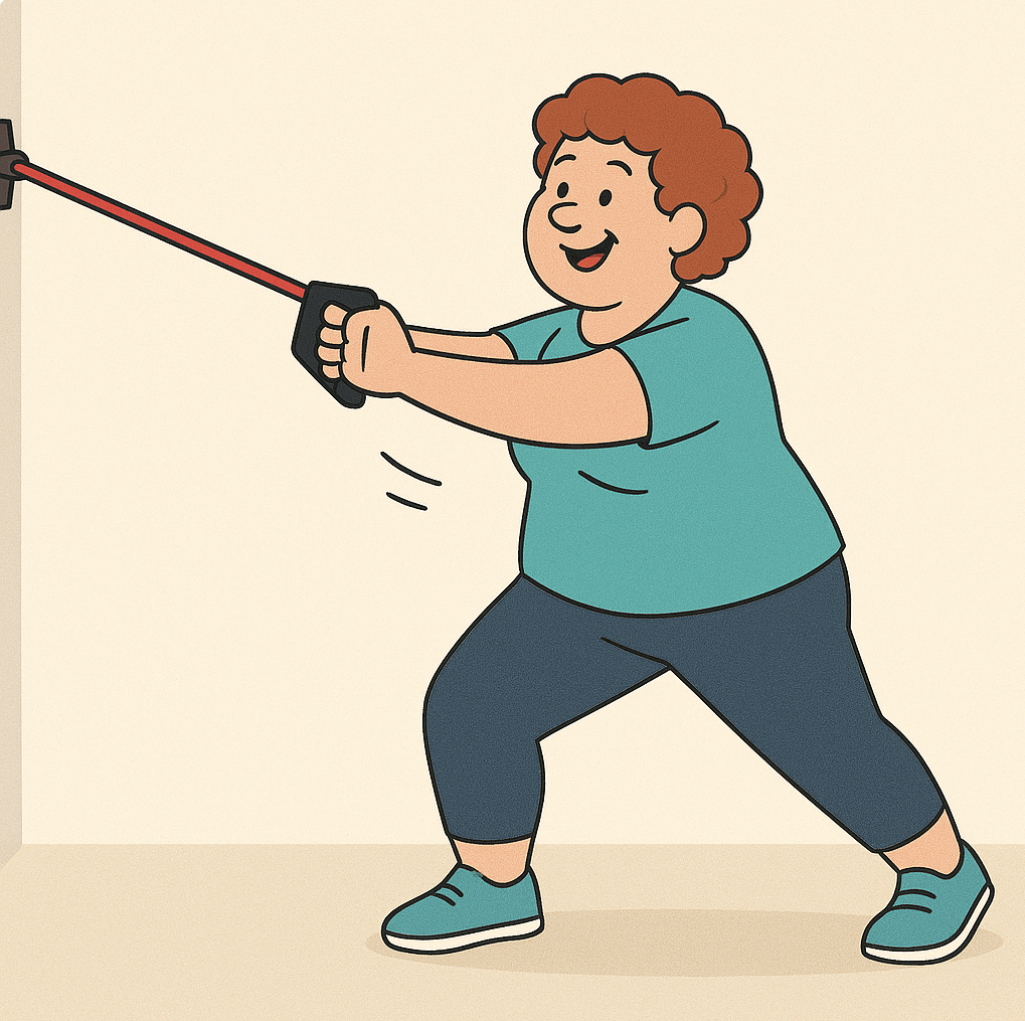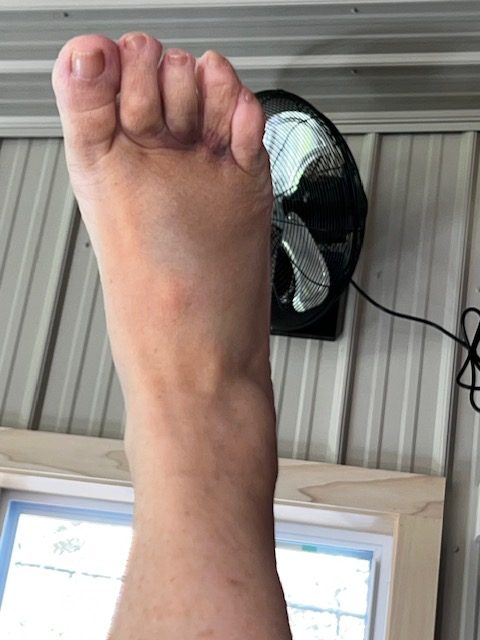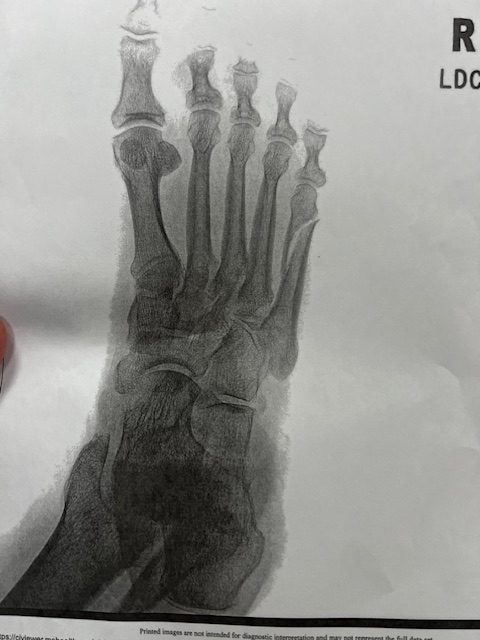AdaptResearchProject Field Notes
When Margaret Hrzyslvska (name changed to protect her privacy) began her physical therapy for frozen shoulder (adhesive capsulitis), she was prescribed a resistance-band based protocol. What she expected to be standard mobilization and stretching evolved into a more conscious, breath-integrated loading practice. Over time she discovered that coordinating eccentric loading with slow, counted breathing amplified not only her physical recovery, but her resilience at a systemic level.
⸻
The Protocol: Conscious Eccentric Loading + Breath Coordination
Margaret’s exercise sequence works as follows (using a moderate resistance band):
Step 1 – Eccentric descent (inhale 4 counts): Slowly return the band to rest (muscle lengthening) while inhaling steadily.
Step 2 – Rest-at-length pause (hold 4 counts): Band at resting length, minimal tension. Hold breath and maintain awareness.
Step 3 – Concentric ascent (exhale 4 counts): Stretch the band under resistance, exhaling evenly.
Step 4 – End-position hold (hold 4 counts): Keep the band stretched at peak tension, reinforcing stability and proprioceptive awareness.
⸻
Why Consciousness + Loading Works: Scientific Mechanisms
1. Tendon / Connective Tissue Adaptation via Eccentric Loading
• Collagen remodeling & fiber alignment: Eccentric contractions induce greater mechanical stress on tendon fibers and surrounding connective tissues, stimulating collagen synthesis and improved fiber alignment.
• Reduced pain & improved function: Meta-analyses show eccentric exercise is superior to other loading for reducing pain and restoring function in tendinopathy.
2. Neural / Motor Control Benefits
• Improved motor unit recruitment: Slowing down during eccentric phases recruits motor units more synchronously, helping reset neural control.
• Proprioceptive feedback & stability: Pausing at rest and under load enhances mechanoreceptor feedback, improving joint awareness.
3. Breath & Autonomic Integration
• Heart Rate Variability (HRV) and vagal tone: Longer exhalations increase parasympathetic activity.
• Resonant breathing improves mood and adaptability: Randomized trials show slow, paced breathing (~6 breaths per minute) increases HRV, reduces stress, and enhances cognition.
• Structured 4-4-4-4 rhythm: The inhale–pause–exhale–pause pattern supports baroreceptor activity, improves coherence, and reduces sympathetic overactivation.
⸻
Exponential Gains: How Conscious Loading Enhances Resiliency
Margaret’s protocol generates benefits on multiple levels:
• Physical resiliency: Stronger tendon collagen, improved mobility, less pain.
• Neural resiliency: Better coordination and reduced protective tightness.
• Autonomic resiliency: Breath-linked nervous system regulation enhances stress adaptability.
• Psychological resiliency: Learning to slow down and breathe through resistance builds confidence and emotional adaptability.
Each repetition is not just exercise, but retraining body, brain, and breath to respond with adaptability.
⸻
Research Caveats & Practical Guidelines
• Start with moderate resistance to maintain control.
• Keep shoulder and scapular alignment.
• Maintain breath timing comfortably.
• 2–3 sessions per week are optimal.
⸻
Conclusion
Margaret Hrzyslvska’s frozen shoulder recovery highlights how rehabilitation can also serve as adaptability training. Conscious eccentric loading, blended with structured breathing, becomes more than PT: it’s a gateway to transformational intelligence, where body, breath, and mind integrate to produce exponential resiliency gains that last.
⸻
References
1. Malliaras, P., et al. (2013). Eccentric loading for Achilles tendinopathy: a systematic review and meta-analysis. British Journal of Sports Medicine, 47(4), 229–239. Link
2. Li, H., et al. (2023). Is eccentric exercise an effective treatment for Achilles tendinopathy? A systematic review and meta-analysis. BMC Sports Science, Medicine and Rehabilitation, 15, 79. Link
3. Bae, J., et al. (2021). Cardiac autonomic responses to exhalation-lengthening breathing: impact on heart rate variability. Frontiers in Physiology, 12: 713758. Link
4. Lehrer, P. M., & Gevirtz, R. (2014). Heart rate variability biofeedback: How and why does it work? Frontiers in Psychology, 5:756. Link
5. Schumann, A., et al. (2022). Resonance breathing improves stress, mood, and HRV: A randomized controlled trial. Frontiers in Psychology, 13: 892455. Link
Case details have been shared with participant consent. Identifying information has been altered to protect privacy.
⸻



